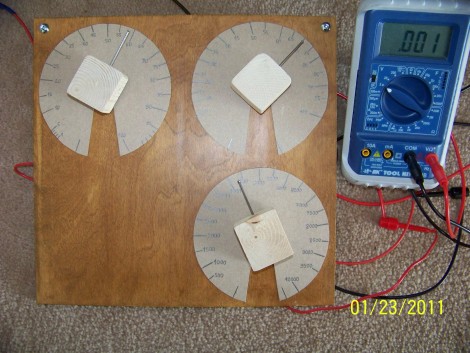
This analog computer can multiply, divide, square numbers, and find square roots. It has a maximum result of ten billion with an average precision of 2-3%. [Miroslav’s] build recreates something he saw in a Popular Electronics magazine. It uses a resistor network made up of three potentiometers with a digital multimeter is an integral part of the machine. To multiply a number you set the needles on the first two knobs to the numbers on which you are operating. To find the result turn the third knob until the multimeter has been zeroed out and read the value that knob is pointing to. It seems much more simple than some of the discrete logic computers we’ve seen, yet it’s just as interesting.











